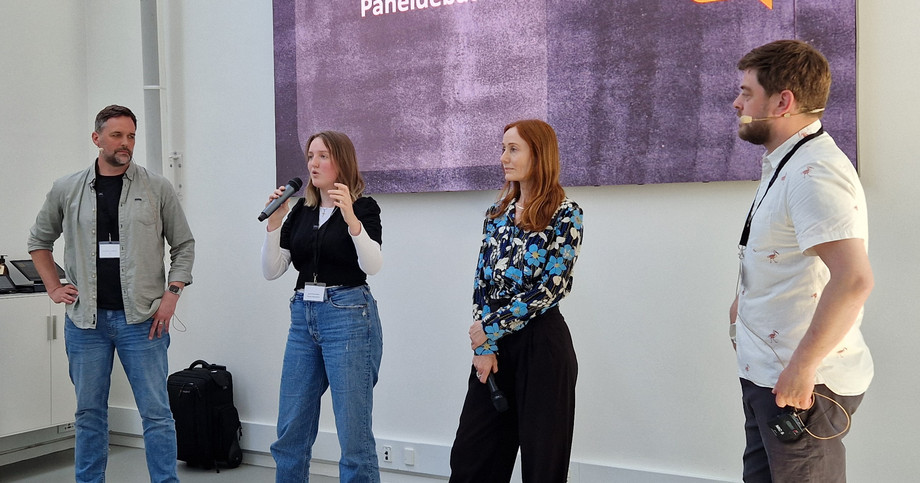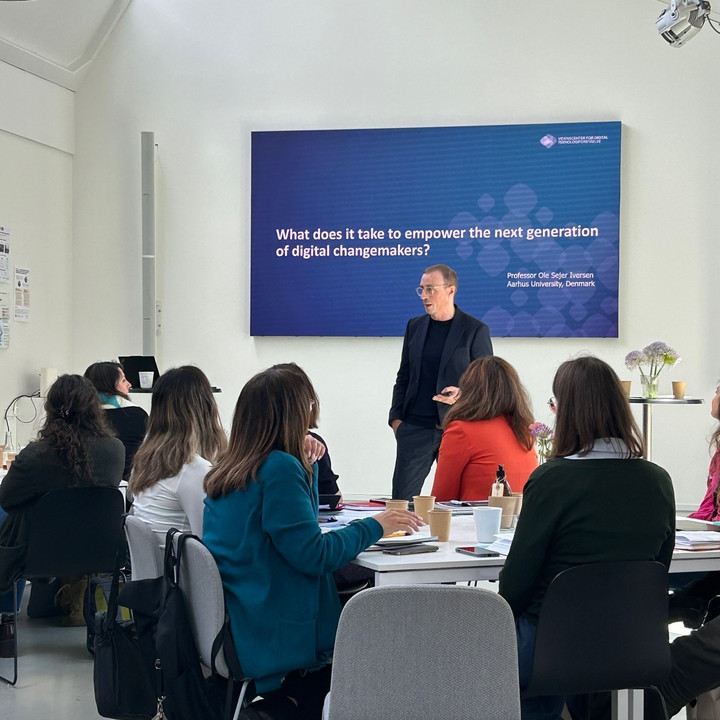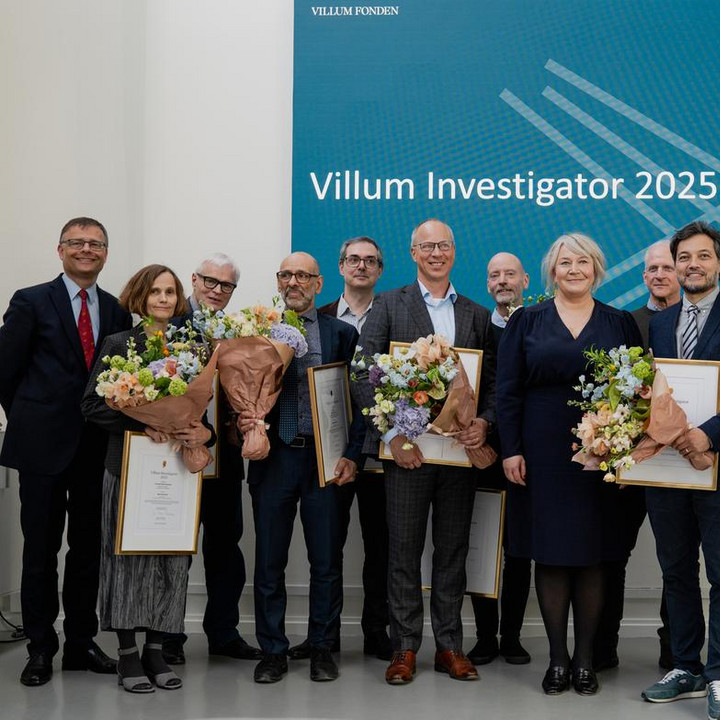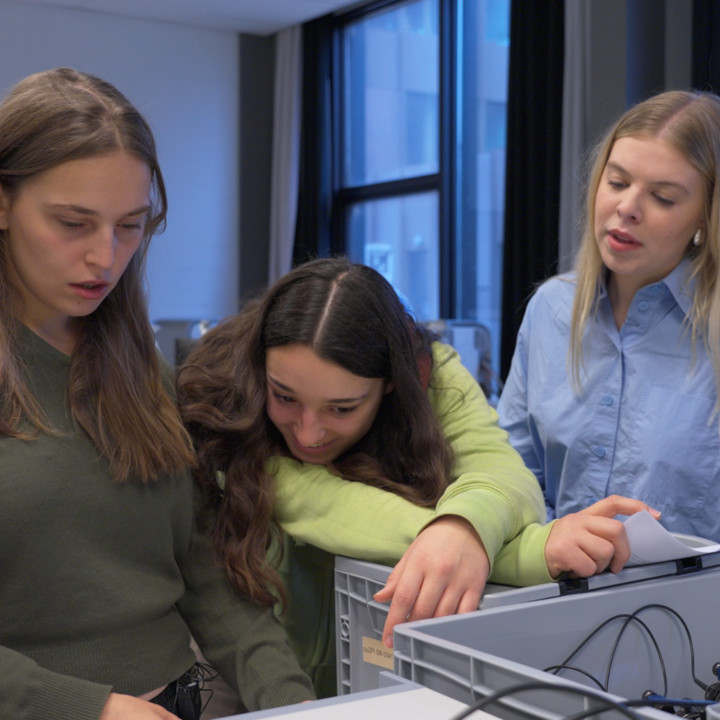Artificial Intelligence in Primary School: Three Highlights from the Søborg Meeting

"We are currently caught between two points: we are worried that artificial intelligence will lead to cheating on exams, loss of skills, and teacher job cuts – but we are also enamored with the fantastic possibilities it offers for enhancing teaching and preparation. So how should we navigate going forward?"
This is how Agi Csonka, program director at the Villum Foundation, opened this year's Søborg Meeting. Leaders, civil servants, and researchers from the education sector gathered to learn more about what everyone is currently discussing: What should we do with artificial intelligence? Here are some of the answers from the day.
1. Teachers are Key – But Need Guidelines
Mikkel Aslak Koudal Andersen, a consultant at the Center for Educational Resources, highlighted the day's most important theme in a panel debate:
"I meet many teachers in schools who avoid talking to students about what generative AI can do because they are afraid of encouraging cheating – and then there are some students who see the potential and try it out on their own. It is unsustainable that we haven't addressed the framework yet."
Mikkel Aslak Koudal Andersen was a member of the government's group of experts that published its recommendations on the use of ChatGPT and similar tools in exams and tests in April. The group subsequently wrote an op-ed in Altinget outlining the recommendations not covered by the government's mandate.
Ole Sejer Iversen, head of the Knowledge Center for Digital Literacy, urged the participants of the meeting to read both the recommendations and the op-ed. As he said, "In Denmark, we have focused a lot on the risk of cheating and much less on the potentials for learning when it comes to artificial intelligence." He also called for a national AI strategy to guide headmasters, teachers, and students.
The keynote speaker of the day was Gareth Stockdale, head of the micro:bit Educational Foundation in the UK. He talked about the international work on setting the framework for AI in primary schools, including a new analysis from the World Economic Forum that highlights four potentials: AI can automate administrative tasks; it can create new ways to examine and evaluate; it can enhance differentiated teaching – and finally, artificial intelligence can be integrated as a tool in all subjects to enhance students' digital literacy and technological understanding.
The latter is the focus of the micro:bit Educational Foundation, whose mini-computer has reached more than 44 million children and young people in over 60 countries in educational programs. But the potentials of AI can only be realized if teachers receive the necessary support from central authorities, Gareth Stockdale pointed out.
2. AI Must Be Integrated into a Danish Educational Tradition
So what should be emphasized in a forthcoming national strategy? The answer from the Søborg Meeting included a "Danishification" of both technologies, educational materials, and didactic approaches to match a Danish educational tradition centered on general education. Ole Sejer Iversen explains:
"Much AI technology is made by large producers who may not necessarily have the Danish primary school tradition in mind and do not quite address the educational mission we have set for ourselves in Denmark. So we cannot just import – we must set requirements for the education, technologies, and materials we bring into schools."
Ole Sejer Iversen also pointed to other topics that should be covered in a national strategy – including setting the framework for how AI should be integrated into the existing curriculum in informatics and technological literacy, and clarifying what requirements the technology places on teachers' skills and practices.
3. Students Need Support – and Equal Opportunities
Ultimately, it's about the students, and they were brought into the discussion in the panel debate. Laura Drachmann Poulsen, chairman of the Danish Students' Association, emphasized that although her peers often have more technological insight than adults, digital literacy does not automatically follow:
"We are quick to embrace technology, but we need help reflecting on how to use it – where the pitfalls are, where the information comes from, how we use the answers, etc. We believe all teachers can contribute to this, regardless of their technological skills, because it an extension of the compentences we already learn in school."
The panel participants agreed that without the necessary framework for how AI can be integrated into teaching – not just in natural science subjects but as a tool in all subjects – students are left to their own resources. This creates a risk of inequality, as author and digital media analyst Camilla Mehlsen explained. She gets the final word:
"When I look at the digital development so far, it is the young people who are already resourceful that gets the greatest advantages from technology. Artificial intelligence creates opportunities for inclusion, but unfortunately also for the opposite, and here it is the school's obligation to give everyone equal opportunities in a digital future."



